A Gum Abscess With no Pain Can be Worse than you Think. Here’s Why
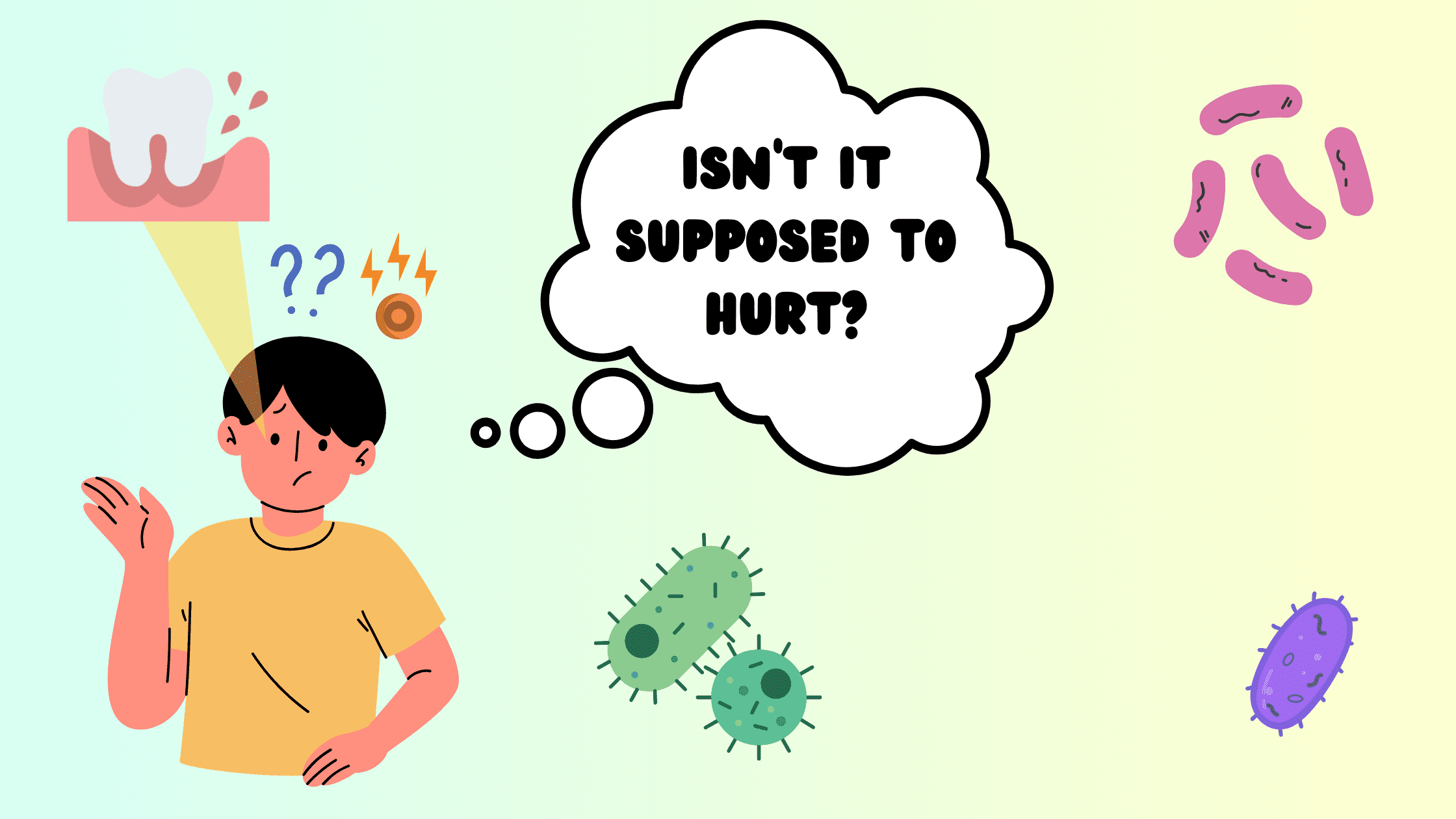
When we think of a gum abscess, the first thing that often comes to mind is the intense pain it's known to bring. That throbbing ache that makes every bite and sip of something hot or cold feel like a battle in your mouth. But here's the thing - not all gum abscesses come with symptoms.
Some of them remain entirely symptom-free. And this is not a good thing. Why? Because the absence of pain doesn't mean you are safe. In reality, it means that the infection can silently evolve and spread further, all without your notice.
In this article, we will learn how gum abscesses occur, why they sometimes remain pain-free, explore similar gum conditions, and shed light on the potential complications.
In this article:
1. How Does Gum Abscess Occur?
2. Why Gum Abscesses Aren't Always Painful
3. Why Gum Abscesses Never Heal on Their Own
4. What Can Happen If You Don’t Treat a Gum Abscess
5. Another Potential Cause of A Painless Swelling Next to an Infected Tooth
6. Other Less Common Conditions Resulting in Painless Gum Swelling
7. Takeaway
How Does Gum Abscess Occur?
A gum abscess is the result of a severe bacterial infection that affects your tooth or the surrounding gum tissue. It's often called "gum boil" or pimple because of its appearance.Whatever the cause, gum abscess doesn't happen overnight. Instead, it's a long process that involves many stages.
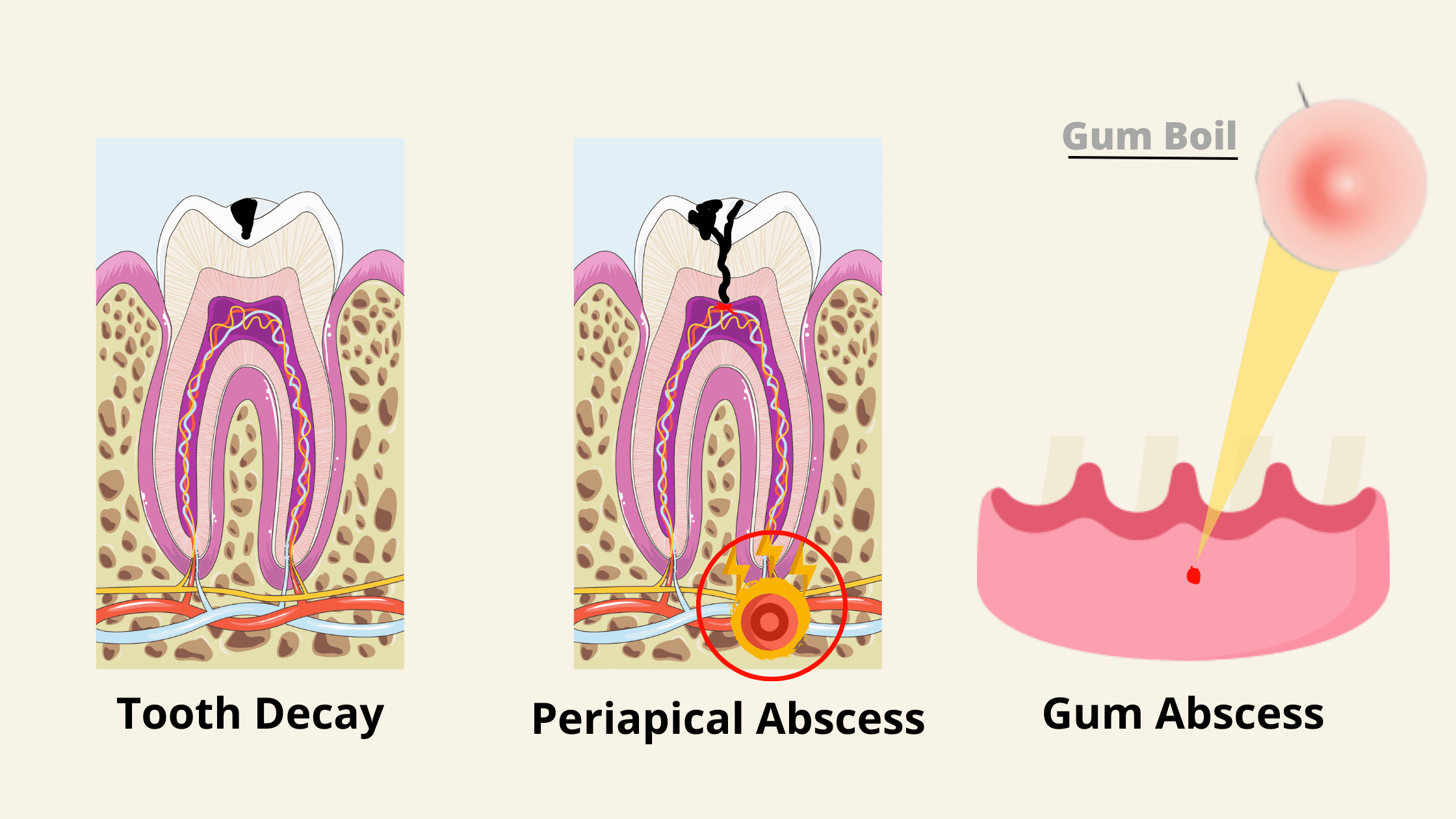
Usually, it all starts with a tooth cavity. Cavities create holes in your teeth, giving harmful bacteria an open door to reach the pulp — the soft inside part of the tooth that contains nerves and blood vessels.
Once inside, these “BAD” bacteria thrive and trigger a strong inflammation, which can make your tooth extremely sensitive to hot or cold food and drink. This stage is known as pulpitis (pulp inflammation).
As the inflammation worsens, the pulp tissue shrinks and eventually dies — a stage known as necrosis. When this happens, the pain may actually fade, but the bacteria don’t stop. They keep spreading deeper into the surrounding tissues. Some people might feel no pain for a while, while others may experience severe flare-ups.
After the tooth dies, the bacteria and toxins build up around the root tip, forming a pocket of pus called a periapical abscess. When this pus moves up toward the gum, it results in a gum boil or pimple (as shown below).
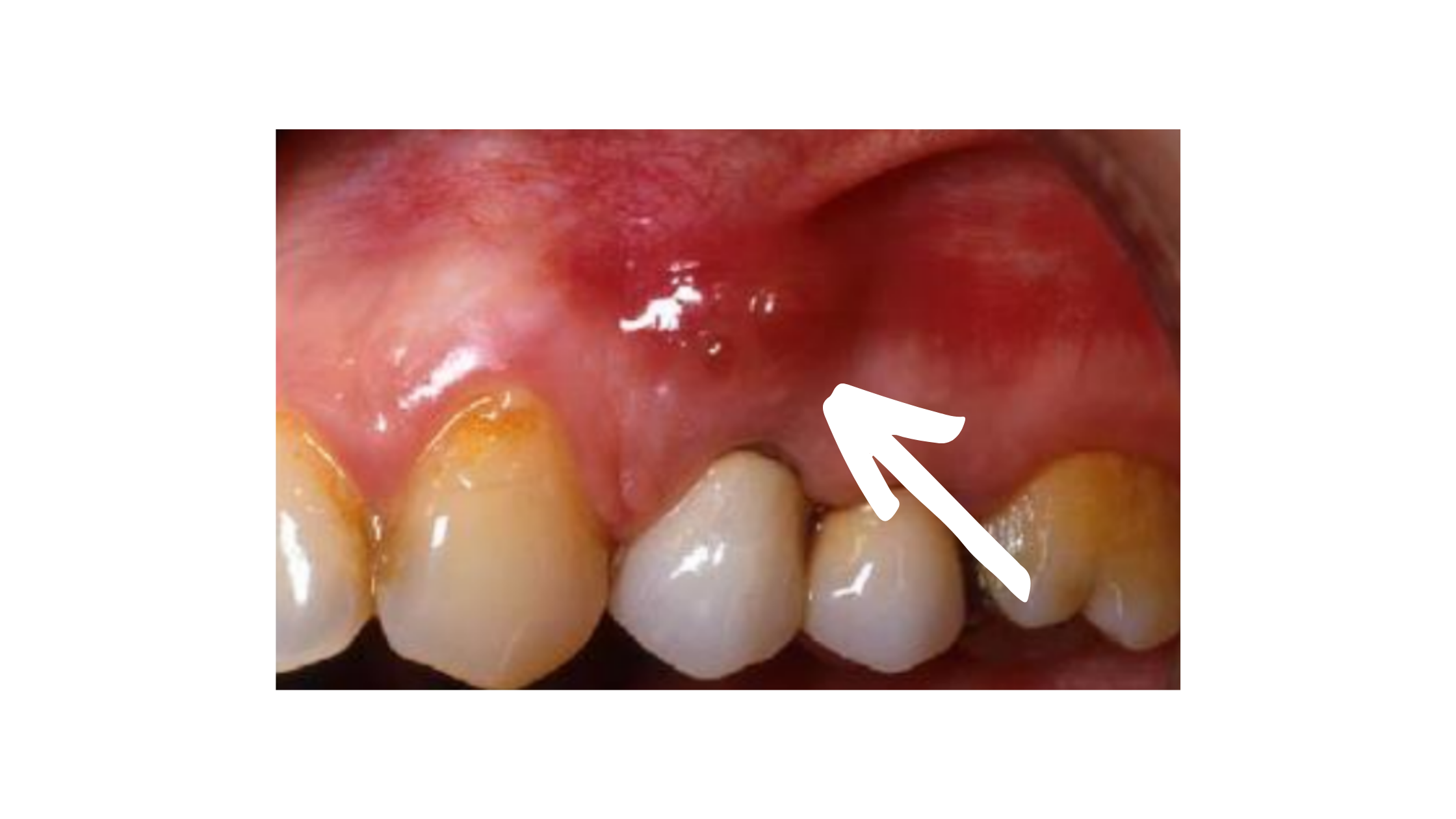
Cavities aren’t the only cause, though. Other dental issues — like gum disease — can also lead to a gum abscess.
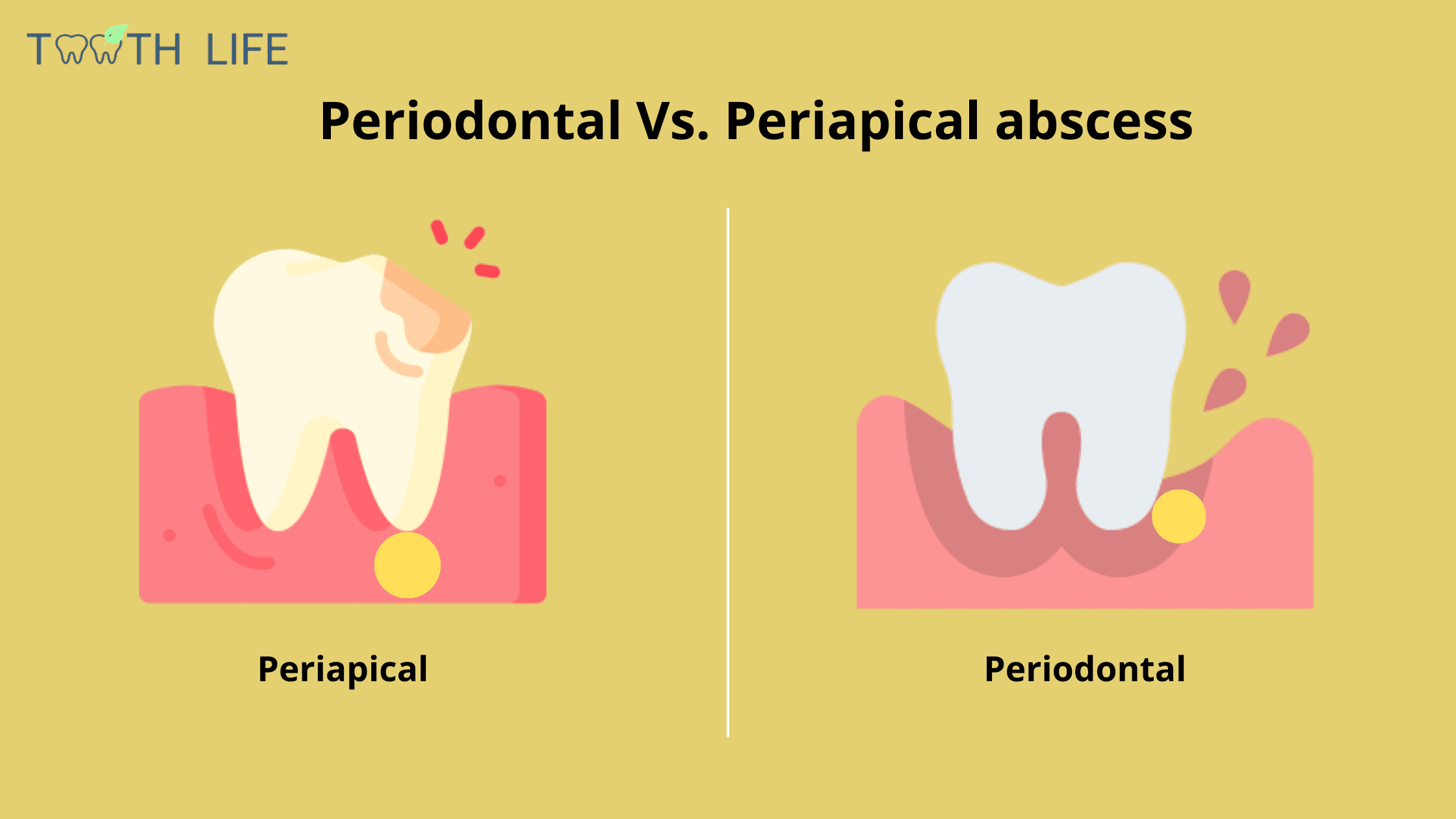
In gum disease, harmful bacteria slip deep below the gum line, setting off a similar cycle of inflammation and pus buildup. However, abscesses resulting from gum disease are called periodontal abscesses and need a different treatment approach.
Why Gum Abscesses Aren't Always Painful
Gum abscesses don’t always cause pain. There’s no hard-and-fast rule when it comes to the symptoms of a dental infection.Everyone’s mouth and immune system are different, so symptoms are not consistent and differ widely from one person to another.
Just because there’s no pain doesn’t mean there’s no problem — or the abscess healed on its own. Always see your dentist if you think something’s not right in your mouth.
Some people with a gum abscess may feel throbbing pain that can disrupt daily life, like eating and speaking. This happens when the body decides to react with intense, acute inflammation.
Others may feel little or no pain. But this doesn’t mean the infection is gone — it just means the body is trying to keep the bacteria under control without overreacting. The infection is still there, but it’s progressing slowly, so there’s less pain.
Often, pain from a dental abscess will come and go on its own. That’s because the balance between your immune system and the bacteria keeps shifting. Sometimes your body is winning; other times, the bacteria take over.
There’s another situation where the pain from a gum abscess can completely disappear: when a fistula forms.
A fistula is a tiny tunnel that lets the pocket of pus drain out through the gums into the mouth. This can leave you with a bad taste or bad breath.
But again, no pain doesn’t mean the infection is cured. The drainage only brings temporary relief by reducing the pressure. The pus will likely build up again in just a few days.
Why Gum Abscesses Never Heal on Their Own
A gum abscess can never heal on its own. It will persist as long as the underlying infection source remains untreated.Think of a gum boil as a symptom — not the actual source of the infection. Even if the abscess goes away for a while, it will likely come back and cause problems again.
That’s why treatment needs to focus on removing the root cause of the infection, not just the abscess itself.
Your dentist is the best person to help with this. The only way to truly clear the infection is to clean and disinfect the tooth from the inside. This might involve a root canal, tooth extraction, or, in some cases, minor surgery.
What Can Happen If You Don’t Treat a Gum Abscess
Gum abscesses, even when painless, can pose a silent threat if left untreated. Here's why you should take them seriously: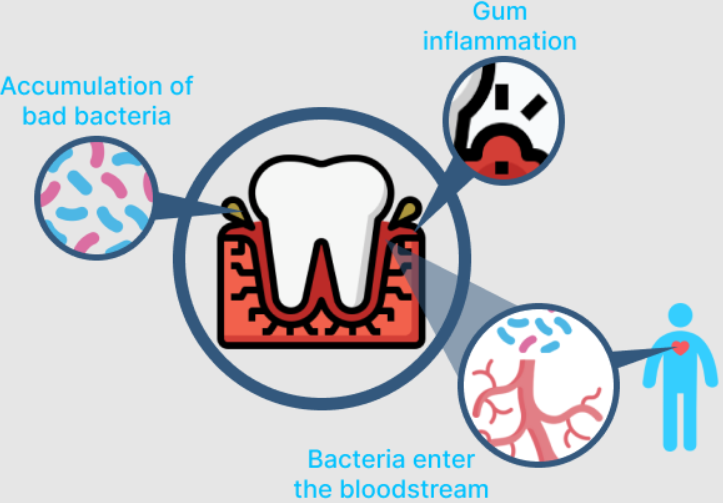
- Progression to Surrounding Tissues: If not addressed, a gum abscess can continue to advance into surrounding areas. Initially, it targets the jawbone and the soft tissues of the face.
- Extension to Facial Areas: The infection can extend to other parts of the face, including the cheeks, chin, and lips. This condition is called Facial Cellulitis and can bring on symptoms like fever, facial pain, swelling, heat sensation, and redness.
- Bone Loss and Deformity: In severe cases, the infection can erode a significant portion of the bone, leading to tooth loss and distortion of the jaw.
- Airway Blockage: As the infection progresses, it may even reach the neck area and obstruct the airway. This serious complication is known as Ludwig's angina and can result in suffocation, a life-threatening situation.
- Spread to Vital Organs: Bacteria from the abscess can enter the bloodstream and infect vital organs such as the heart and brain.
- Septic Shock: When bacteria reach the bloodstream, the body can react with severe, widespread inflammation, potentially leading to a life-threatening condition called Septic Shock.
Another Potential Cause of A Painless Swelling Next to an Infected Tooth
If you notice a painless hard or soft swelling near a dead tooth, it could be a sign of a Cyst, an abnormal growth that forms inside the jawbone filled with inflammatory material. It's also called a periapical cyst because it occurs near the tips of the tooth roots (apical area).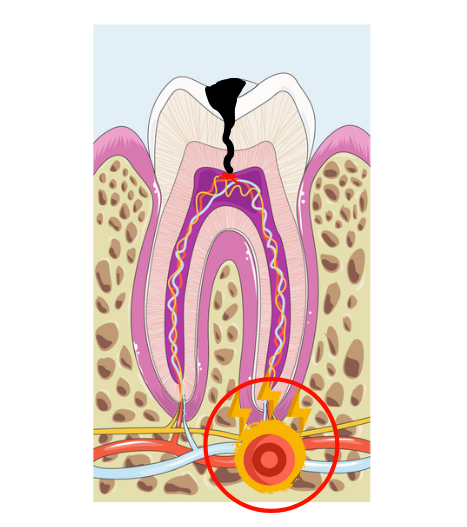
Cysts can form when an infection becomes chronic and persists for too long. It’s the body’s way of trying to contain the bacteria and inflammation inside a fluid-filled sac.
Most dental cysts aren’t painful and can stay hidden without any obvious symptoms for months or even years. Many people only discover them by chance during a routine dental checkup.
However, cysts can slowly grow bigger over time. If they get large enough, they may start to show through the gum or even cause changes in the bone or facial structure. The only time a cyst might become painful is if it gets infected or reaches a significant size.
Other Less Common Conditions Resulting in Painless Gum Swelling
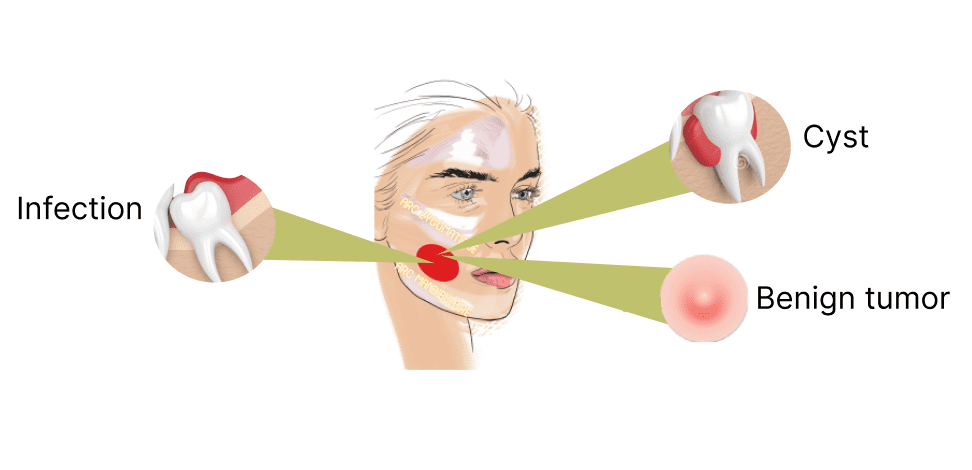
Not all gum swellings indicate an abscess. Some may be caused by benign (non-cancerous) tumors. These benign growths on the gums are relatively common and can affect anyone. Fortunately, most of them are harmless and can easily be surgically removed.
One common type is known as Fibrous Epulis. It appears as a small, round, and hard mass attached to the gums, with a pink or white coating layer resembling the surrounding tissues.
They often result from small and repeated irritations, such as those caused by ill-fitting dental restorations or the buildup of plaque and tartar.
Typically, these abnormal growths are painless unless accidentally injured by a toothbrush or while chewing.
Takeaway
Dental abscesses require prompt treatment—even if you don’t feel any symptoms. Ignoring them can give the infection time to spread further, leading to serious, sometimes life-threatening complications.When there’s no pain, it’s actually an even stronger reason to address the issue immediately, since the infection can develop silently without your awareness.
Waiting until the abscess flares up and causes symptoms is never a good idea. The longer you wait, the more complex the treatment becomes—and the greater the risk to your health.
The best course of action is to schedule an appointment as soon as possible and have your dentist eliminate the source of the infection, once and for all.
Remember, chronic abscesses and cysts can be symptom-free and easily go unnoticed. Sometimes only a routine dental X-ray can reveal them.